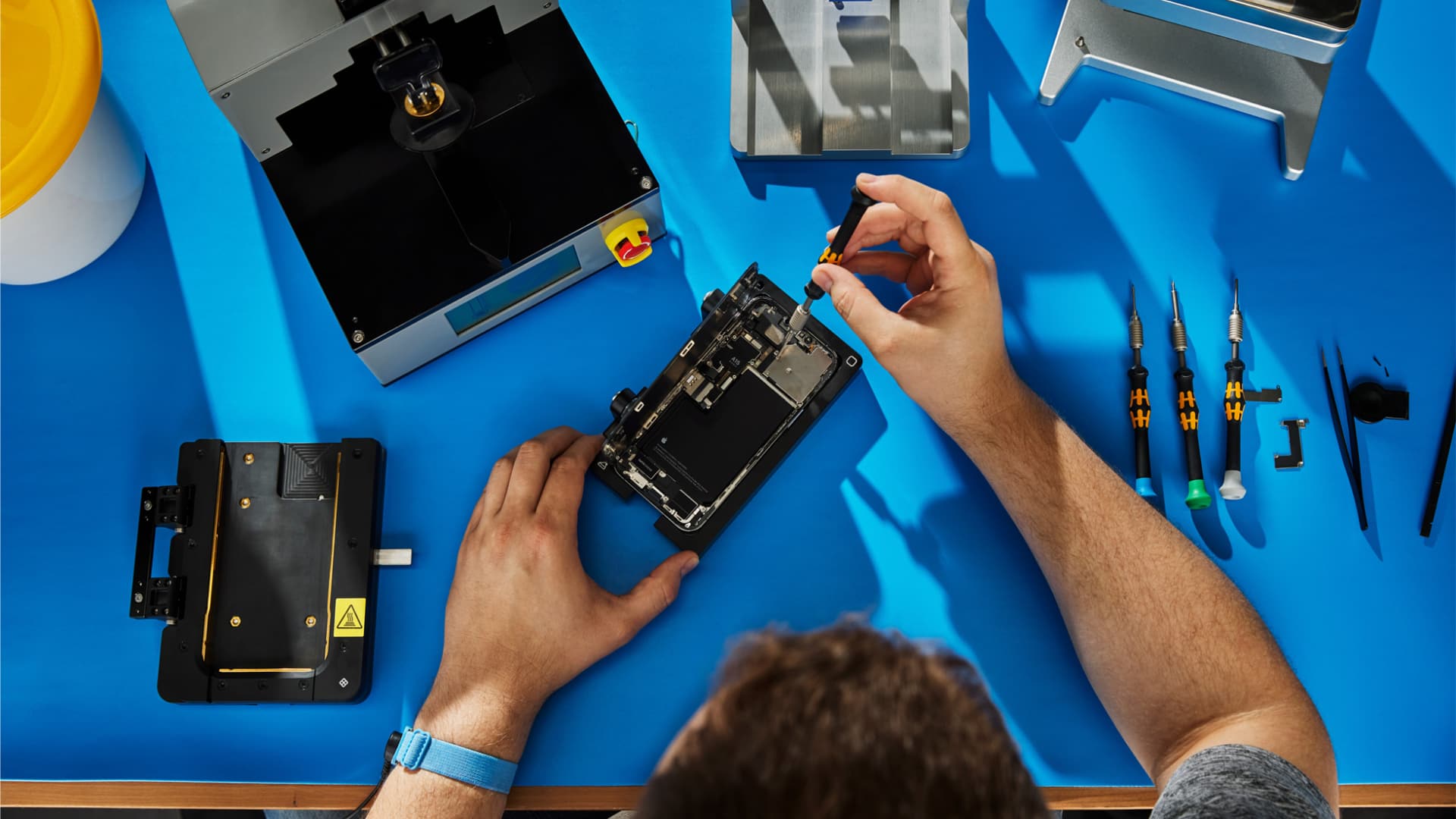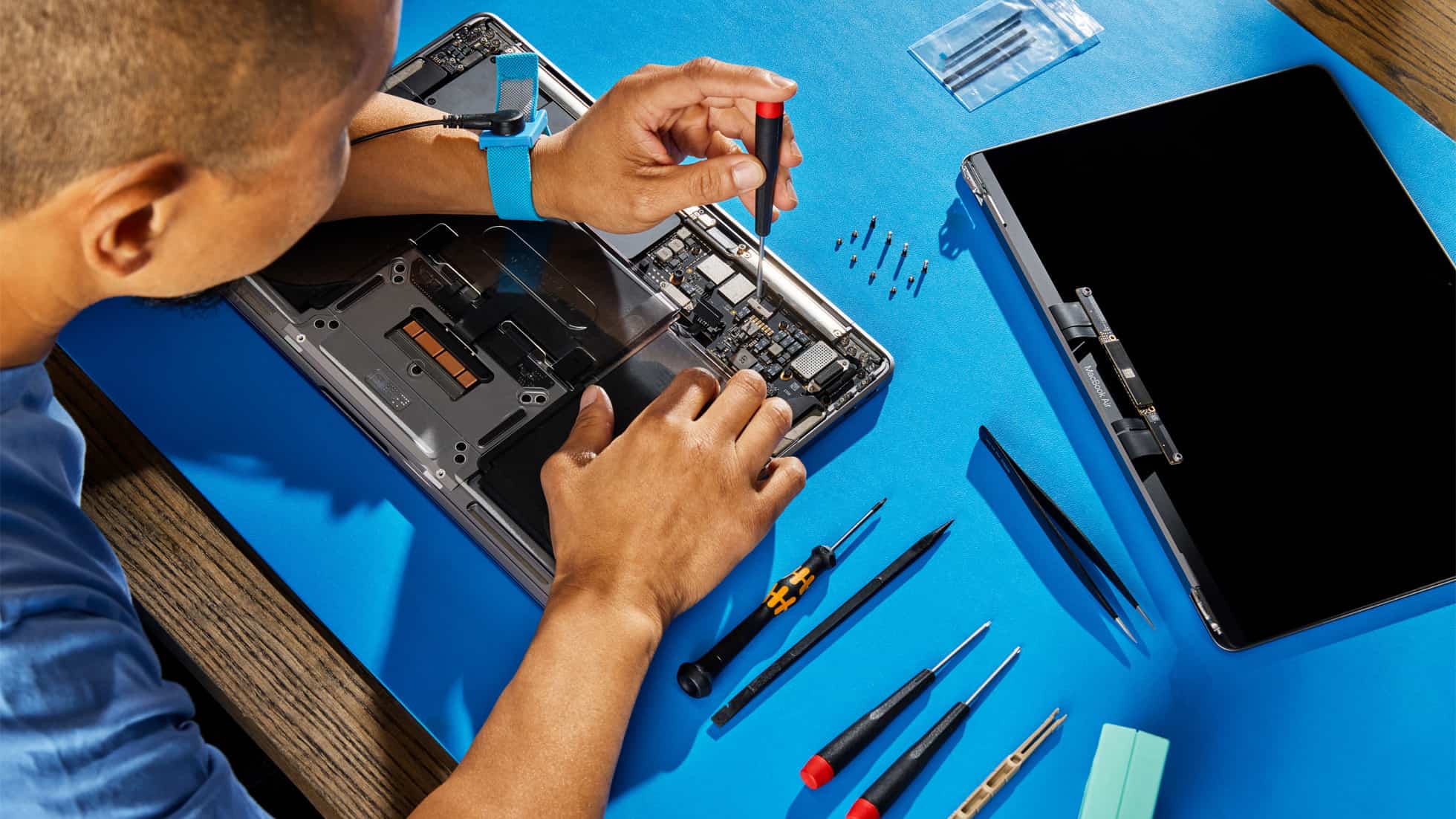Apple will soon permit genuine parts to repair iPhones and other devices, except for the components harvested from stolen devices.

The company says it has worked on this initiative for the past two years, with the change coming this fall beginning with select iPhones models.
The Apple Newsroom announcement states future iPhones will support used biometric sensors. Also, the Parts and Service History section in Settings in iOS 18 will show whether a serviced part is a new or used genuine Apple part.
Apple prides itself for being “the only smartphone company that transparently shows owners whether their device has been repaired and provides information about the parts used.”
iPhone repairs with used genuine parts
The news boils down to these takeaways:
- Users and independent repair shops can utilize used Apple parts
- The change will kick off with “select iPhone models” this fall
- Reusable Apple parts include Face ID and Touch ID sensors
- The pairing process for parts will be simplified
- Activation Lock will prevent the use of stolen parts
- In no way does this restrict independent repair shops that use aftermarket components; quite the contrary, they’ll be able to utilize used Apple parts in repairs
Apple makes it sound as if only the iPhone 16 models due this fall (and all future iPhones) will be able to reuse genuine parts like biometric sensors.
Replacement batteries, displays and cameras must be paired with a specific iPhone unit, complicating repairs. Apple will relax this rule in the fall—you’ll no longer need to provide your iPhone’s serial number when buying genuine parts from the company’s Self-Service Repair Store (except for a logic board replacement).
Activation Lock will detect parts from stolen iPhones
Activation Lock is automatically enabled when you set up Find My. An iPhone with Activation Lock turned on cannot be erased, restored or set up as new without providing the owner’s Apple ID account password. As such, Activation Lock is perhaps the most effective anti-theft feature Apple has created.

If a device under repair detects that a supported part was obtained from another device with Activation Lock or Lost Mode enabled, calibration capabilities for that part will be restricted.
All genuine Apple parts undergo the original factory calibration (including used genuine parts), with the new parts calibration process starting this fall. Whether an independent repair technician or end user, you’ll still need to return core parts to Apple to receive a redeemable credit towards your purchase.
Will the Settings app still warn about non-genuine parts?
The iPhone’s Settings app warns you if a non-genuine part has been detected. Say you smashed the screen of your iPhone. You have two choices.
First, you can take the device to Apple or an authorized repair shop to replace the display with a genuine part. You get peace of mind knowing they installed an Apple-approved screen that performs the same as the original display.
And second, you can save money by having an independent repair shop install a cheaper, non-genuine display replacement. That new screen may or may not perform as well as the genuine part, and you’ll see an annoying warning message about it in the Settings app, but you’ll save some money.
Either way, the Settings app will still warn you about any detected non-genuine replacement parts, and that’s not changing with today’s announcement.
iOS 17.5 brings updated repair messages
What’s changing is the wording of these alerts to make them less confusing. Say your iPhone battery was replaced, but a genuine Apple part was not used.
The Settings app on iOS 17.4 will put up an alert that reads: “Important Battery Message: Unable to determine if your iPhone battery is a genuine Apple part. Go to Settings for more information.” Not very information.
In contrast, the same message in iOS 17.5 reads as follows: “Battery Not Recognized: This can happen if the battery is not a genuine Apple part or was installed incorrectly. View more details in PARTS AND SERVICE HISTORY in Settings.”